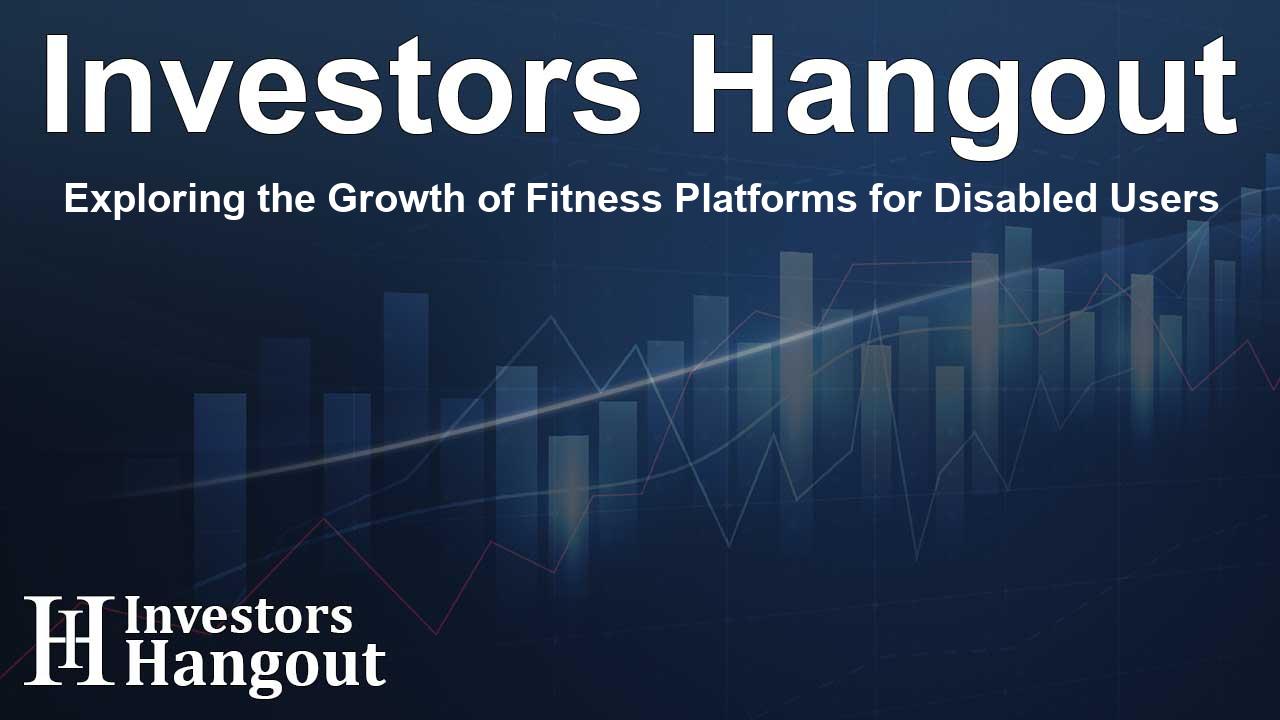Exploring the Growth of Fitness Platforms for Disabled Users

Overview of Fitness Platforms for Disabled Individuals
The fitness industry is rapidly evolving to become more inclusive, with platforms tailored for individuals with disabilities gaining significant traction. This sector was valued at USD 2.1 billion recently and is expected to experience remarkable growth, projected to reach USD 10.3 billion by 2032. The growth rate manifests a compound annual growth rate (CAGR) of approximately 19.4% from 2024 to 2032. The increase in diverse disabilities and the expansion of telehealth services serve as key motivators for this upward trend.
Driving Forces Behind Market Expansion
Several factors contribute to the rising popularity of fitness platforms aimed at individuals with disabilities. Firstly, as more people recognize the importance of physical fitness for mental and physical well-being, there is a considerable demand for tailored fitness solutions. Those with disabilities often seek platforms that provide adaptive exercise options, enhancing their overall quality of life.
Technological Advancements
Innovative technologies have played a vital role in creating adaptive fitness applications. Many modern fitness platforms cater to various accessibility needs, incorporating features like voice recognition, screen enhancements, and gesture-based controls. The adaptability of these platforms ensures that users can engage in fitness routines that suit their personal capabilities.
Popularity of Mobile Platforms
The market is segmented based on the platforms utilized, with Android devices currently dominating this space. The affordability and widespread availability of Android devices make them a popular choice among disabled users who may have budget constraints. The availability of customizable applications on this platform aligns with various accessibility needs, promoting inclusivity in fitness.
Preferred Devices Among Users
A significant aspect of fitness platforms for disabled individuals is the variety of available devices. Segmenting the market further provides insight into user preferences for smartphones, tablets, and wearable devices. Smartphones are projected to generate a revenue of USD 4.3 billion by 2032 due to their versatility and ease of use. These handheld devices often incorporate advanced features that simplify engagement with fitness applications.
Wearable Technology
Wearable fitness devices are also gaining popularity, allowing users to monitor their fitness in real-time. These gadgets provide a crucial link between user data and the capabilities of fitness applications, enhancing experience and motivation for users.
Regional Insights on Market Performance
In the North American market for fitness platforms aimed at disabled users, the U.S. holds the leading position, generating substantial revenue. Recent federal initiatives focusing on accessibility and advocacy for disabled rights have further accelerated this market's growth. The prevalence of disabilities in society drives the necessity for innovative fitness solutions, solidifying the demand for adaptive platforms.
Innovative Companies Leading the Way
Numerous companies are spearheading the development of fitness platforms for users with disabilities, including industry leaders like Apple and Fitbit. Their commitment to creating inclusive applications fosters advancements that resonate with consumers' current demands. Other notable names include MyFitnessPal, Peloton Interactive, and Special Olympics—each contributing unique offerings that address the diverse needs of this market.
Enhancing Quality of Life Through Non-Traditional Fitness Solutions
As more individuals with disabilities look for ways to incorporate fitness into their routines, the demand for enhanced solutions continues to rise. These platforms support not only physical fitness but also improve mental health and independence, making them vital in reinforcing the well-being of users. The increased emphasis on these essential aspects of fitness ensures that investment and innovation will thrive in the years to come.
Frequently Asked Questions
What are fitness platforms for individuals with disabilities?
These platforms provide tailored fitness solutions designed to accommodate various disabilities, enhancing both physical fitness and overall well-being.
What technological advancements are influencing this market?
Innovative features such as voice recognition and customizable applications are being integrated to support diverse accessibility needs.
Why is the Android platform dominant in this market?
The Android platform is affordable and allows for the creation of highly customizable applications, making it accessible to a wider audience.
What role do wearable devices play in fitness for disabled users?
Wearable devices help users monitor their fitness in real-time, enhancing their experience and encouraging consistent engagement with adaptive fitness applications.
Who are the leading companies in the fitness platforms market?
Notable companies include Apple, Fitbit, MyFitnessPal, and Peloton Interactive, each offering innovative solutions for users with disabilities.
About The Author
Contact Thomas Cooper privately here. Or send an email with ATTN: Thomas Cooper as the subject to contact@investorshangout.com.
About Investors Hangout
Investors Hangout is a leading online stock forum for financial discussion and learning, offering a wide range of free tools and resources. It draws in traders of all levels, who exchange market knowledge, investigate trading tactics, and keep an eye on industry developments in real time. Featuring financial articles, stock message boards, quotes, charts, company profiles, and live news updates. Through cooperative learning and a wealth of informational resources, it helps users from novices creating their first portfolios to experts honing their techniques. Join Investors Hangout today: https://investorshangout.com/
The content of this article is based on factual, publicly available information and does not represent legal, financial, or investment advice. Investors Hangout does not offer financial advice, and the author is not a licensed financial advisor. Consult a qualified advisor before making any financial or investment decisions based on this article. This article should not be considered advice to purchase, sell, or hold any securities or other investments. If any of the material provided here is inaccurate, please contact us for corrections.
